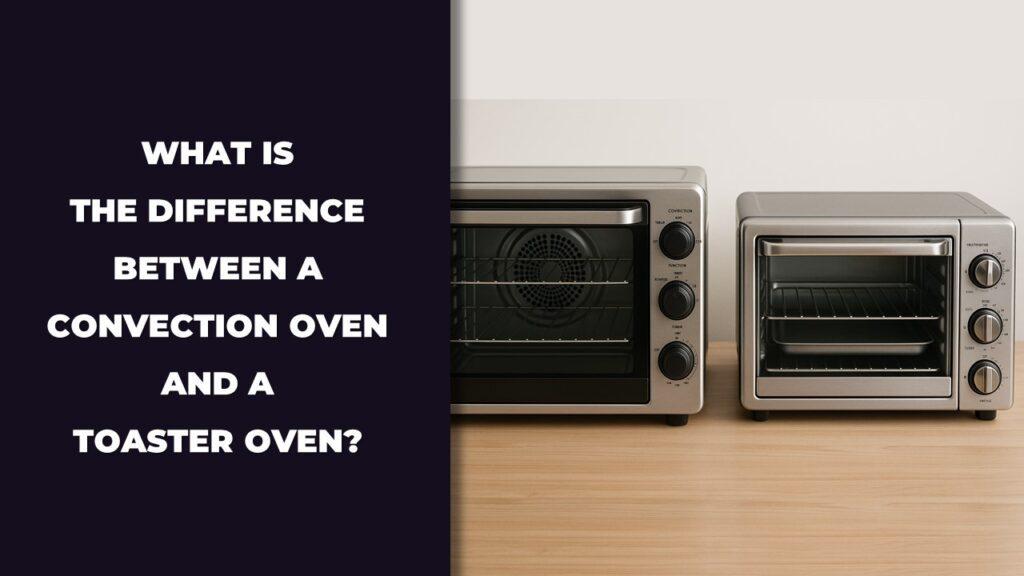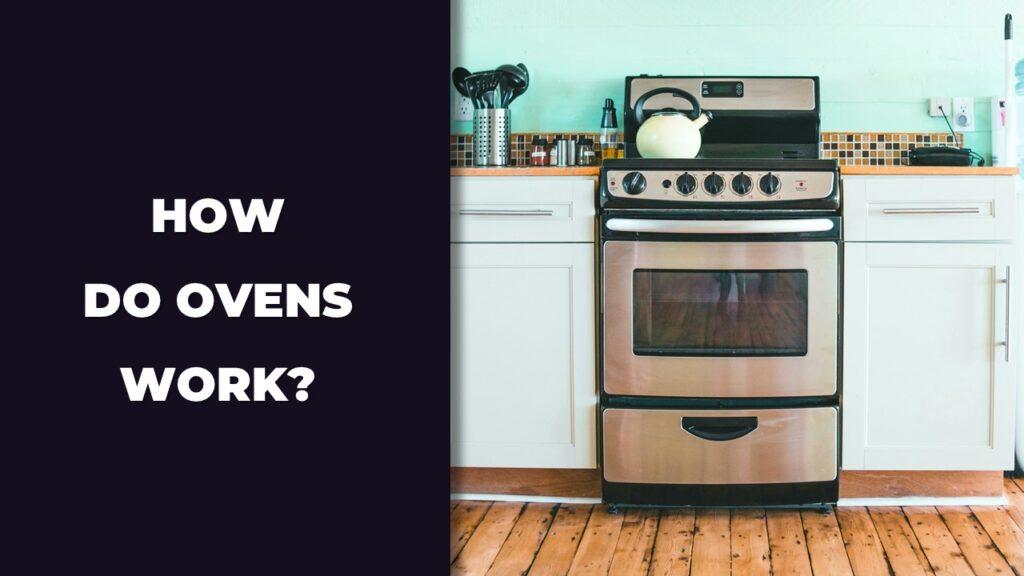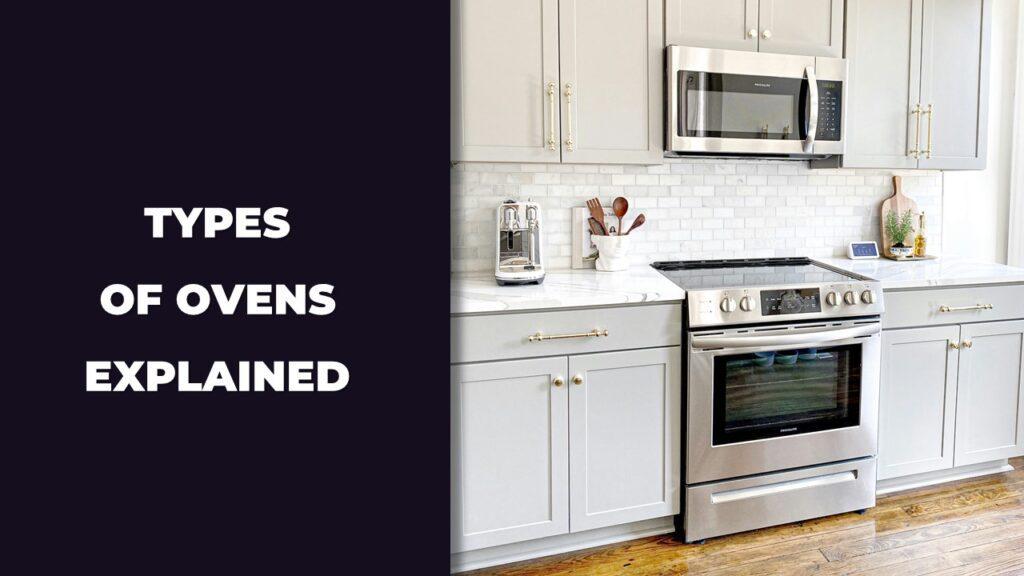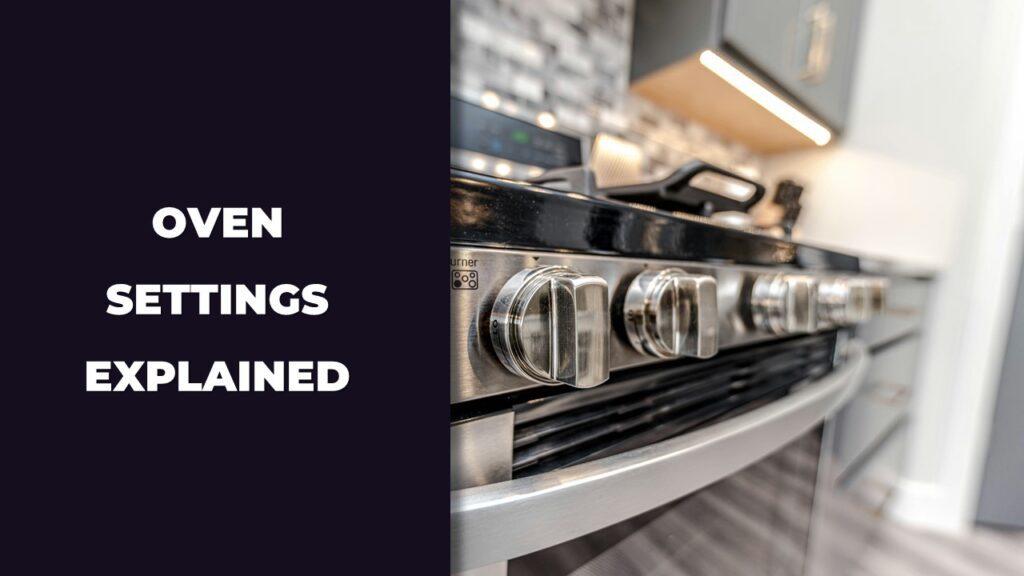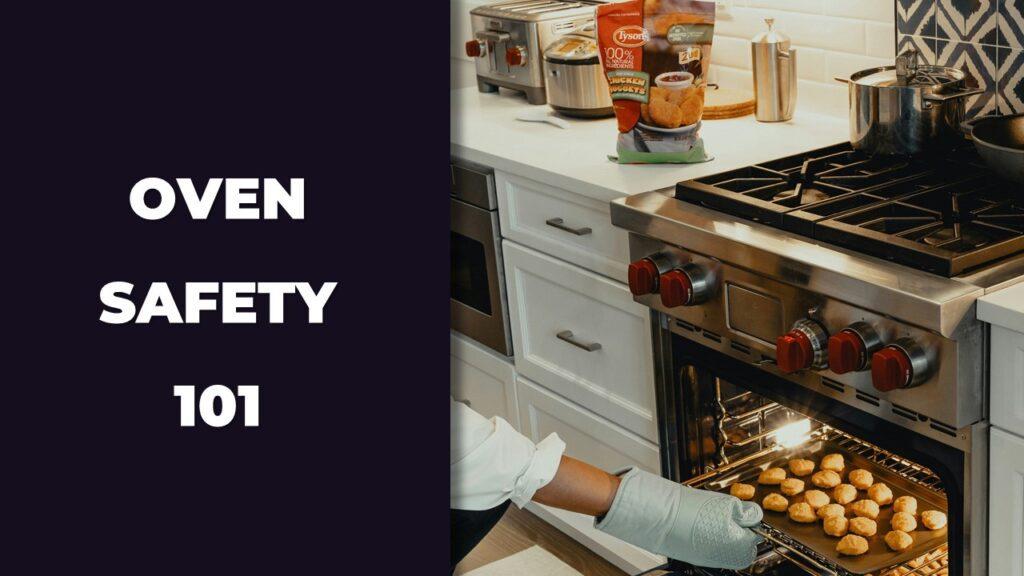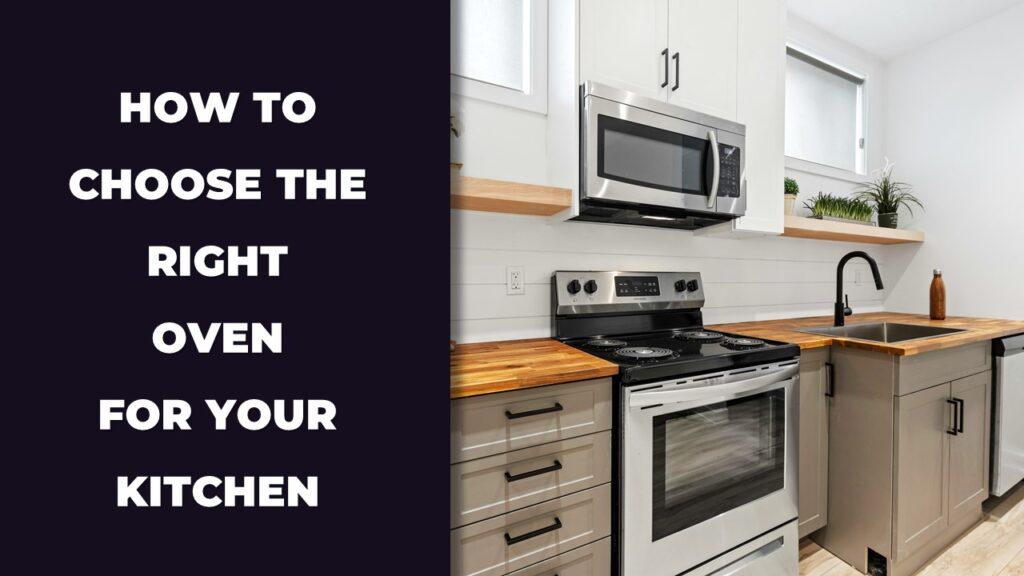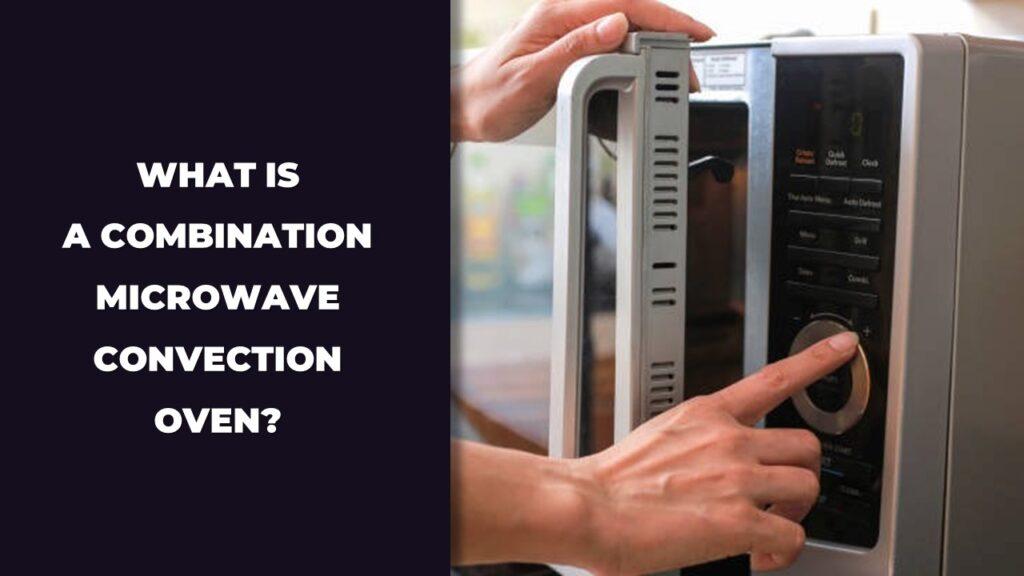
A combination microwave-convection oven uses two cooking methods in one appliance. The microwave heats food quickly by targeting water molecules, while the convection setting uses a fan and heating element to bake, roast, and brown food evenly. Together, they let you cook faster with better texture.
In this article, we are going to cover how it works, pros and cons, what you can cook in it, what to avoid, and tips for choosing the right one.
How A Combination Microwave-Convection Oven Works
A combination microwave-convection oven works by blending two heating methods that affect food in different ways. The microwave function uses electromagnetic waves to heat water molecules inside the food, which cooks it quickly from the inside out. The convection function uses a fan and heating element to surround the food with hot air, which cooks the outside evenly and adds texture.
When both modes are used together, your food cooks faster, stays moist inside, and gets a crisp or golden finish on the outside—all at once.
Here’s a breakdown of how each part affects how your food cooks:
Microwave Heating Mode
Microwave energy penetrates the food and agitates water molecules. This creates heat from within.
- It heats food fast but unevenly if used alone.
- It doesn’t create browning, crusts, or crisp textures.
- Moisture stays trapped, so food can come out soft or even soggy on the surface.
This mode is best for heating food where texture doesn’t matter, or when you’re just looking for speed.
Convection Heating Mode
Convection heat surrounds your food with moving hot air. It works from the outside in.
- Heat is distributed evenly, which avoids hot or cold spots.
- Surface moisture evaporates, allowing food to brown and crisp.
- Ideal for creating crusts, roasting, and evenly baked results.
This mode is slower than microwave, but much better for structure and finish.
Combination Mode
This is where the cooking gets smarter.
- Microwave energy speeds up the internal cooking process, heating the inside of your food fast.
- At the same time, convection air crisps the outside, dries surface moisture, and helps with caramelization or browning.
- This dual action shortens total cook time while still giving oven-quality results.
So, your frozen lasagna doesn’t just steam in the middle—it also gets a golden, bubbly top. A piece of chicken won’t dry out inside, yet still comes out with a crispy skin.
The combination mode is about timing and balance. It keeps moisture in the right places while still achieving the textures we expect from traditional oven cooking. That’s what makes this appliance different—it doesn’t just cook fast, it cooks smart.
Benefits of Using a Combination Microwave-Convection Oven
A combination microwave-convection oven offers more flexibility than a basic microwave. You get quicker cooking with better texture, plus it saves space and often energy.
Here’s why many people prefer this type of oven:
- Cooks Faster with Better Results: Meals heat faster and turn out crisp or golden, not soggy.
- Replaces Multiple Appliances: It can microwave, bake, roast, and crisp—all in one compact unit.
- Perfect for Small Kitchens: Ideal for apartments, dorms, and RVs where space is limited.
- Energy Savings: Heats up faster than a full-size oven and uses less electricity for small meals.
- Good for Everyday Cooking: Works well for frozen pizza, baked potatoes, roasted veggies, and more.
If you’re looking for something that can do more than just reheat food, this oven gives you solid cooking power without taking over your kitchen.
Limitations And Things To Keep In Mind
A combination microwave-convection oven is flexible, but it’s not perfect. It can’t fully replace a standard oven for everything, and there are a few trade-offs to know before you rely on it for all your cooking.
Here are some things to watch out for:
- Smaller Capacity: Most units have less space than full-size ovens. Cooking large turkeys or multiple dishes at once isn’t ideal.
- Takes Time To Learn: The settings may seem confusing at first. You’ll need to get used to switching modes and adjusting cook times.
- Cookware Matters: You can’t use metal during microwave mode, and tall dishes may not fit. Use low-sided, microwave-safe cookware.
- Not Great For Batch Baking: If you like baking in large quantities, the limited rack space will slow you down.
- More Frequent Cleaning: Grease and splatters can build up quickly due to the dual heating system. Some models don’t have self-cleaning options.
If you cook for a big family or regularly bake in bulk, this might be better as a second oven—not your only one.
What Can You Cook In A Microwave-Convection Oven?
A microwave-convection oven can handle more than just reheating leftovers. From baking cookies to roasting vegetables to crisping frozen pizza, this appliance covers a lot of ground. The key is knowing which mode to use for each type of food.
Ideal Foods For Each Mode
Here’s a quick breakdown based on the cooking function:
Microwave Only:
- Heating leftovers
- Cooking vegetables
- Making popcorn
- Defrosting frozen meat or meals
Use this for speed when crispiness doesn’t matter.
Convection Only:
- Baking cookies or muffins
- Roasting chicken, fish, or vegetables
- Cooking frozen fries or breaded snacks
- Browning casseroles
This setting works just like a regular convection oven.
Combination Mode:
- Frozen pizza with a crispy crust
- Baked pasta or lasagna with melted cheese
- Quick chicken thighs that stay juicy inside
- Microwave mug cakes with browned tops
This is your go-to mode for faster meals that still taste oven-cooked.
Foods To Avoid In Convection Mode
Some foods just don’t work well with hot air circulation. Skip the convection setting when cooking:
- Delicate Cakes or Soufflés: These may dry out or rise unevenly due to the moving air.
- Custards and Flan: The dry heat can lead to cracks or curdling.
- Bread with Thin Crusts: If you’re baking soft bread rolls, they may harden too quickly on the outside.
When in doubt, check your recipe. If it calls for gentle heat or steam, stick with the microwave mode or use a traditional oven instead.
Safety Tips And Proper Usage
A combination microwave-convection oven is safe to use when you follow a few basic rules. The key is knowing which materials work with each mode and keeping the appliance clean and ventilated. Misusing it can damage the unit or cause safety issues.
Here are simple tips to help you use it safely:
- Never Use Metal In Microwave Mode: Metal trays, foil, or utensils can spark and damage the oven. Use only microwave-safe cookware unless you’re using convection mode.
- Use Low-Sided Cookware In Convection Mode: This helps air circulate better around the food, leading to even browning and faster cooking.
- Avoid Blocking Air Vents: Leave enough space around the appliance and don’t place items over internal vents. Good airflow is key to performance and oven safety.
- Check Food Often During Combo Mode: Cooking speeds up, and food can brown quickly. Monitor your dish, especially the first few times you try a new recipe.
- Let It Cool Before Cleaning: Wait until the oven cools down before wiping the interior. Use a damp cloth to clean spills and avoid harsh chemicals that may damage surfaces.
- Keep The Door Seals Clean: This helps maintain proper cooking temperature and avoids energy loss during use.
Following these habits not only protects the appliance but also helps your food cook evenly and safely every time.
Is A Combination Microwave-Convection Oven Right For You?
A combination microwave-convection oven is a good fit if you want faster cooking without losing texture or flavor. It’s especially useful for smaller kitchens, busy households, and people who don’t want to run a full-size oven for every meal.
Here’s how to tell if this appliance is a smart match for your cooking needs:
- You Have Limited Kitchen Space: Great for apartments, dorms, RVs, or anywhere space is tight.
- You Cook Small Meals Often: Ideal for one to four people. It handles day-to-day meals without wasting energy.
- You Want Faster Meals Without Compromising Taste: Combines speed with quality. Meals come out crispy, browned, and fully cooked.
- You Don’t Bake In Bulk: It’s perfect for a tray of cookies or a small roast—but not built for holiday-sized batches.
- You Need More Versatility: If your microwave feels limited or your oven feels slow, this bridges the gap.
- You Value Energy Savings: It heats up quicker than large ovens and doesn’t warm up the whole kitchen.
It’s not a replacement for every cooking task, but it fills a useful role—especially when time, space, and flexibility matter.
Comparison: Combination Oven vs Standard Microwave vs Full Oven
A combination microwave-convection oven gives you the speed of a microwave with the texture and browning of an oven. It sits between a microwave and a traditional oven in size, cooking power, and flexibility. While it can’t handle large meals like a full oven, it does more than a microwave ever could.
Here’s a quick comparison of key features:
| Feature | Combo Oven | Microwave Only | Traditional Oven |
| Heats Quickly | Yes | Yes | No |
| Crisps or Browns Food | Yes | No | Yes |
| Bakes and Roasts | Yes | No | Yes |
| Compact and Space-Saving | Yes | Yes | No |
| Suitable for Large Dishes | No | No | Yes |
If you need something fast, compact, and capable of baking or roasting, the combination oven offers the most balanced solution.
Buying Tips: What To Look For In A Combo Microwave-Convection Oven
Choosing the right combination microwave-convection oven comes down to how you plan to use it. Look for models that match your cooking habits, fit your space, and offer the right mix of speed and features.
Here are the key things to check:
- Interior Capacity: Look at the size in liters or cubic feet. Smaller models (under 1 cu. ft.) are good for basic use. Larger ones handle casseroles and whole chickens.
- Power Levels: Aim for at least 900 watts for the microwave and solid convection power (usually shown in watts too). More power means faster, more even cooking.
- Preset Cooking Programs: These save time and remove the guesswork for common foods like popcorn, pizza, or baked potatoes.
- Control Panel and Display: A digital panel with clear labels and touch buttons is easier to use than rotary dials or cluttered layouts.
- Microwave and Convection Toggle: Look for models that let you switch between modes easily or use them at the same time.
- Included Accessories: Some ovens come with a convection rack, baking tray, or crisping plate. These help get better results with certain foods.
- Cleaning Features: Stainless steel interiors are easier to wipe down. Some models have steam-clean functions that make the job faster.
- Countertop or Built-In Design: Make sure the model fits your space. Countertop versions are portable. Built-in options blend into your kitchen but need installation.
The right combo oven should make your daily cooking easier, not more complicated. Look for what you’ll actually use, not just the flashiest features.
Final Thoughts
If you’re looking for a way to cook faster without sacrificing texture or flavor, a combination microwave-convection oven is a smart upgrade. It blends speed and versatility in one compact appliance, letting you bake, roast, reheat, and crisp without switching tools or waiting on a full oven to preheat.
It’s especially useful for small kitchens, RVs, or anyone who cooks in smaller batches. You get the convenience of a microwave with the added ability to brown, crisp, and bake—all from one unit sitting on your counter. While it won’t handle a full holiday meal, it covers most everyday needs with ease.
For busy households or solo cooks who want real oven-style results without the space or energy demands, this type of appliance fits the gap perfectly. It’s fast, flexible, and easy to use once you understand how the modes work together.
Related FAQs
Can A Convection Microwave Replace A Regular Oven?
Yes, for many daily cooking needs, a convection microwave can work in place of a full oven. It’s great for baking cookies, roasting vegetables, or making small casseroles. But if you’re preparing a large turkey or baking multiple trays at once, a full-size oven still does a better job due to its space and higher output.
Can You Use Metal In A Combination Microwave?
You can use metal cookware, trays, or racks only when the appliance is set to convection mode. The microwave function should never be used with metal, as it can cause sparks or damage the interior. Always check the manual, but as a rule, metal and microwave mode do not mix.
Is It Safe To Use Aluminum Foil In A Convection Microwave?
Yes, aluminum foil can be used—but only during convection cooking. It must never touch the oven walls or block airflow vents. Avoid using foil in combination mode unless your manual says it’s safe. Always use small amounts and place it properly to prevent arcing or hot spots.
Are Combo Microwaves Good For Baking Cakes?
Yes, combination ovens can bake cakes well if you use the convection setting only. They circulate hot air evenly, which helps cakes rise and cook through. Avoid using microwave or combination modes for cake batter, as it may cook unevenly or come out rubbery instead of soft and fluffy.
Do Combination Ovens Use More Electricity?
Not usually. Because they preheat faster and cook quicker than traditional ovens, they often use less energy per meal. They’re more efficient for small to medium portions, but if used for long cook times or large meals, the energy use may be similar to a regular oven.

At our core, we’re a group of passionate households and gardening tools and appliances users and enthusiasts. We dive deep into the world of tech, especially when it’s about your household or gardening electric items. We try to provide as much value to the readers with our information and how to blog articles as possible. For affiliate articles our honest and transparent reviews of essential tech products are rooted in real-world experience. We take great satisfaction in offering unbiased evaluations, ensuring that you can make informed decisions when investing in your desired techs.

